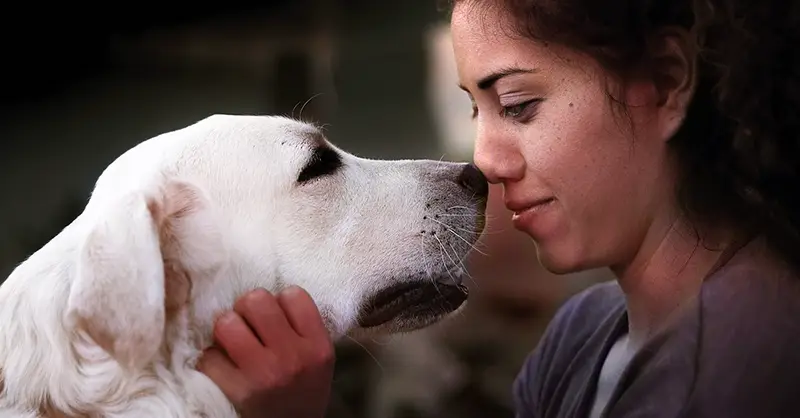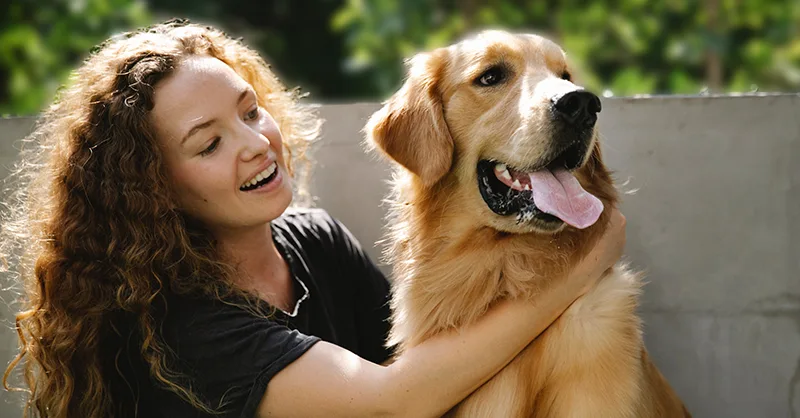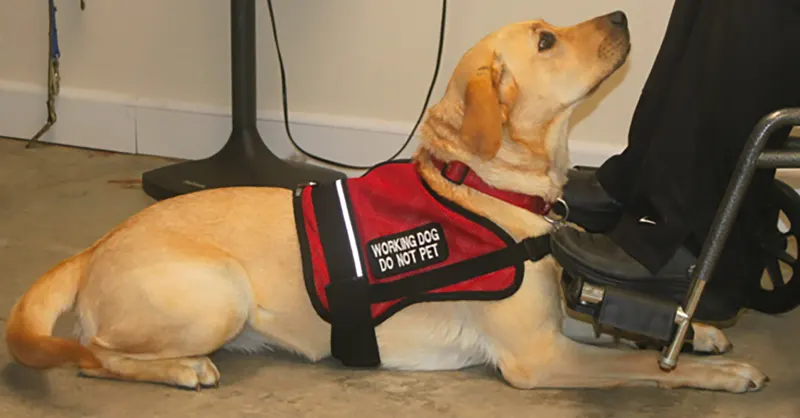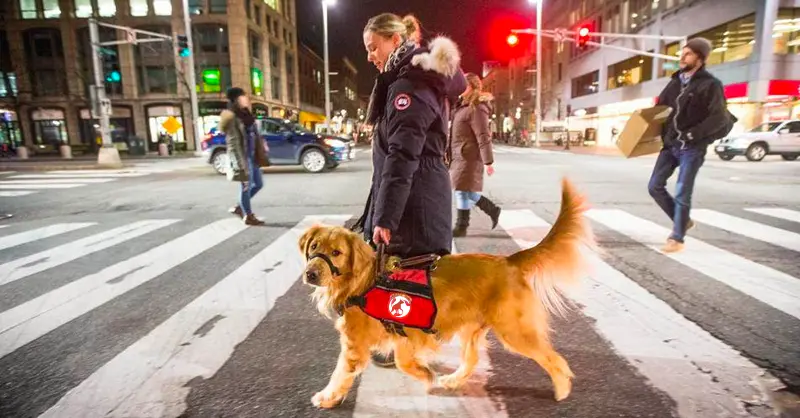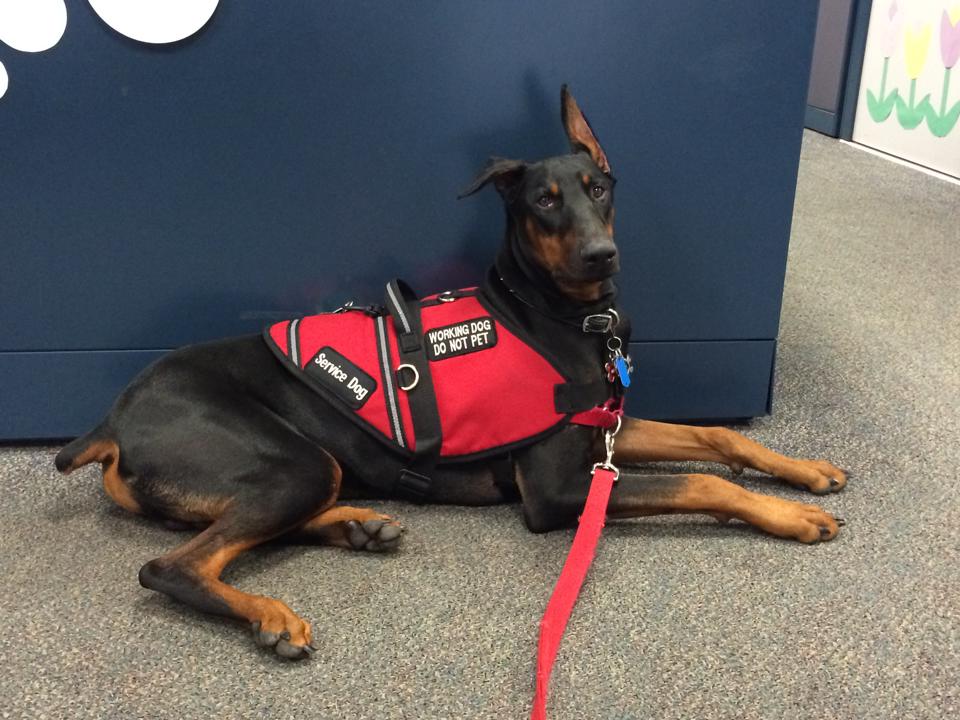Archive for the ‘News’ Category
We call them man’s best friend. Dogs, cats, and other animals are essential to many of our emotional and psychological needs. Why? These furry companions have been around for centuries as humankind’s most loyal and often closest companions.
So it’s not surprising that many of us now rely on emotional support animals (ESA) for our mental health needs. One of the challenges ESA owners face is misinformation about ESAs. Below is a summary of emotional support animal laws to better understand your rights.
Overview: Emotional Support Animal vs Service DogShare this image on your site (copy code below): <div style="clear:both"><a href="https://www.servicedogcertifications.org/emotional-support-animal-laws/" target="_blank"><img decoding="async" style="max-width:100%;margin:0 0 10px;" src="https://www.servicedogcertifications.org/wp-content/uploads/2016/11/Emotional-Support-Animal-vs-Service-Dog.jpg" title="Emotional Support Animal vs Service Dog" alt="Chart comparing ESA vs Service dogs by legal rights and training requirements" border="0" data-src="" /></a></div> Copy
Emotional Support Animal access to public placesNot quite service animals: Emotional support animals do not have the same legal rights as service dogs. As mentioned, service dogs are protected by the Americans with Disabilities Act (ADA). The broad public access rights for assistance animals under the ADA only extend to service dogs that are individually trained to perform tasks to benefit an individual with a disability.
Due to this distinction, your emotional support animal is not protected by the ADA. Service dogs are allowed access to all public places, such as stores, movie theaters, hospitals, and restaurants. On the other hand, emotional support animals are allowed access only to residences (including buildings with no-pet policies) and on select airlines.
Please keep in mind that although ESAs do not need any special training, they still need to be well-behaved and should have the ability to follow basic commands.
ServiceDogCertifications.org
What laws protect Emotional Support Animals?For housing, the law is still on your side. Although emotional support animals do not have the same access rights as service dogs under ADA, they are protected under the Fair Housing Act (FHA).
If you meet the criteria for ESA qualification under the FHA, you are entitled to live with your emotional support animal free of charge and deposits, even if your building doesn’t allow pets. The FHA also prevents housing providers from imposing breed and weight restrictions on your ESA.
Many state laws mostly mirror the FHA, providing additional protection against discrimination for ESA owners. Housing providers are required to provide reasonable accommodations for ESA owners so they can have equal opportunities to use and enjoy their residence.
Air travel is a different story. Until recently, emotional support animals also enjoyed the right to fly with their ESA in the cabin under the Air Carrier Access Act (ACAA). However, due to regulatory changes in January 2021, airlines are no longer required to accommodate emotional support animals (although a few airlines still have programs that allow them).
Meanwhile, psychiatric service dogs (PSDs) are still allowed to fly on planes free of charge. A PSD is a type of service dog that performs tasks relating to an owner’s psychological or intellectual disability. Under the ADA and ACAA, PSDs have the same rights as service dogs that perform tasks for the physically disabled. To learn more about how to fly with a psychiatric service dog, please click on this link for a complete guide.
How do I make my pet into a legitimate Emotional Support Animal?To qualify for an emotional support animal, you need to obtain an ESA letter from a licensed healthcare professional, such as a therapist. The licensed healthcare professional will assess whether you have a qualifying condition and whether an ESA would help improve the symptoms of your condition. Any licensed healthcare professional can issue an ESA letter, but many are not aware of the benefits of ESAs or familiar with how to write an ESA letter.
If your current healthcare provider is unfamiliar with ESAs (or is unwilling to issue an ESA letter), or if you don’t have anyone you’re currently seeing, ESA Doctors can help. ESA Doctors is a caring and reputable service that has operated since 2015 and can connect you to a licensed ESA specialist. Just click on the link below to get started.
When you have a service dog, there are a lot of things to think about including diet, service dog training, and believe it or not, wardrobe. The type of vest your service dog wears is actually a big decision and it has a lot of factors to consider. Those factors include the weather where you live, the type of dog you have, and your lifestyle. Today, let’s look at 4 favorites and which dogs they fit best.
First there is the Tiny Service Dog Cape Vest. This one is made for all your littlest companions. Most of the dogs that would use this vest would fall into the teacup, toy, or mini range with a chest girth of 11″-24″ which spans all 4 sizes available. This is your most basic mesh vest. It can be used for therapy dogs, service dogs, or emotional support dogs. A patch can be added to clarify what type of working dog is wearing the vest. The material is very lightweight though still durable. IT is also edged in reflective material to help make your dog more visible.
Next, let’s look at the Regular Service Dog Cape Vest. This one is like the Tiny Service Dog Cape Vest, just in a larger size. This one is for dogs with a chest girth of 26″-34″ and comes in 2 size options. Like the smaller version, it is made of high quality, lightweight mesh trimmed in reflective material. One of the most attractive features about this basic vest is the cost since this one is going to be at the lowest price point. This is really a determining factor for some, especially when working from a budget.
Third, there is the Reflective Service Dog Harness Vest. This one is made of 2 layers of industrial high denier cross-link mesh making it even more heavy duty. It also has the reflective edging for visibility. One really nice added feature of this vest is the welded rings. There are 3 of them which are great for attaching your dog’s service ID card, and a leach. This vest also can be labeled with patches denoting service dog, therapy dog, or emotional support animal. This is also a great choice for large dogs with 4 sizes that range from 24″ to 42″ which is a massive chest girth. It is important to remember that the cross-linked mesh does make the vest less breathable so it could make temperature a factor for your service dog especially in warmer climates.
Finally, there is the Alpha Service Dog Harness Vest. This one is top of the line and also the best service dog vest, which also means that it comes with a slightly higher price tag. First it is padded for maximum comfort. This one also moves away from mesh into poly coated fabric making it water resistant as well as seriously durable. Like the Reflective Service Dog Harness Vest, it comes with the 3 welded rings for ID and leashes but it also features a handle. This one comes with 2 patches to clearly identify whether you have a therapy dog, service dog, or emotional support dog. It also comes in 4 sizes from 20”-42”. The one thing this one lacks it reflective edging so that may be a deciding factor if you and your animal spend a lot of time outdoors at night.
Making sure that people clearly know you have a working dog is such a benefit to you and your service dog. A service dog vest is an easy way to convey that information to those you may encounter as part of your life and travels. These service dog vests do the job in style with the comfort of your animal in focus.
Remember, a vest is not just for a service dogs. You can use a different patch for your Emotional Support Animal or Therapy Dog!
Tiny Service Dog Mesh Cape Vest
Regular Service Dog Cape Vest
Reflective Service Dog Vest
Classic Service Dog Harness Vest
Pets of the Homeless is a nonprofit animal organization that ensures the animals that provide companionship for homeless men and women are well-fed and healthy. These are the pets who follow their masters every single second of the day. They move from place to place with their humans to seek shelter and a good bed to sleep at night.
It might not be easy to fathom why the homeless would want to have a dog around when they can’t even have enough provisions for their basic needs. But this is a situation happens and Pets of the Homeless knows they can do something about it. Here are three things you should know about the nonprofit organization:
1) Pets of the Homeless was established by Genevieve Frederick. She saw that even when the homeless have no material belongings, it is remarkable how they can keep special bonds with their dogs. Incredibly, many of these homeless pets walk side by side with their masters without any leash, and Frederick observed that the dogs are usually happy too, per Just For Media. She had to urge to at least help make their conditions better.
2) Frederick learned that the homeless are sometimes turned away from shelters because they have pets, when it’s the only thing that they have besides the clothes on their backs. Hence, she was inspired to set up a food donation drive for the homeless and their pets and this was how the organization started in 2008.
3) Pets of the Homeless soon got in touch with veterinarians and volunteers to continue their work. They have expanded their cause to different programs, helping at over 13,000 animals. Aside from giving free pet foods, the organization offers free wellness clinic treatments, emergency care and pet crate provisions.
“For shelters that say ‘yes,’ we will send that shelter free collapsible sleeping crates, so that these people can get in out of the cold, out of the heat, off the streets, for just a little bit,” said Frederick via Huffington Post. “This keeps them in a secure place and keeps everybody safe.”
You can extend help, volunteer or learn about Pets of the Homeless here.
